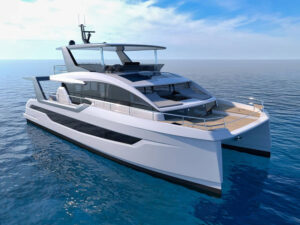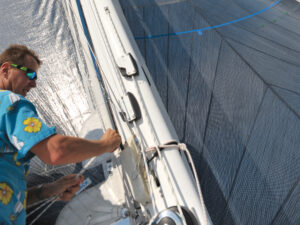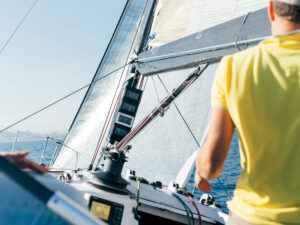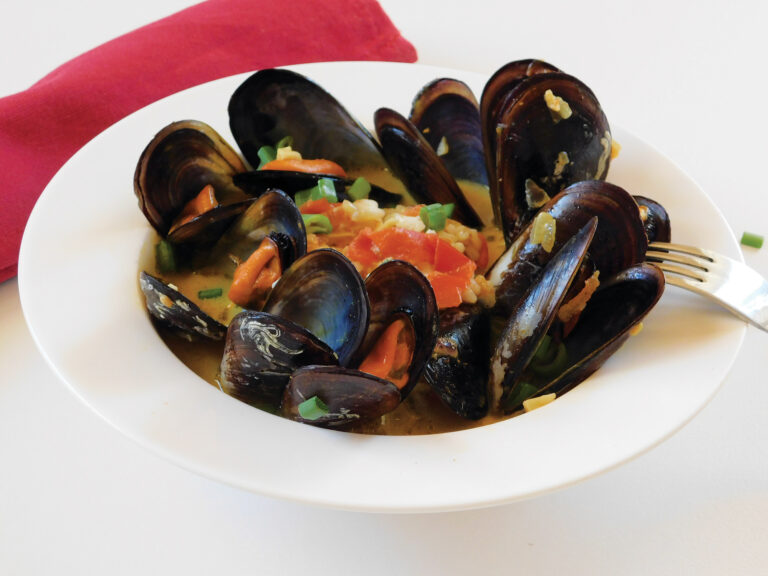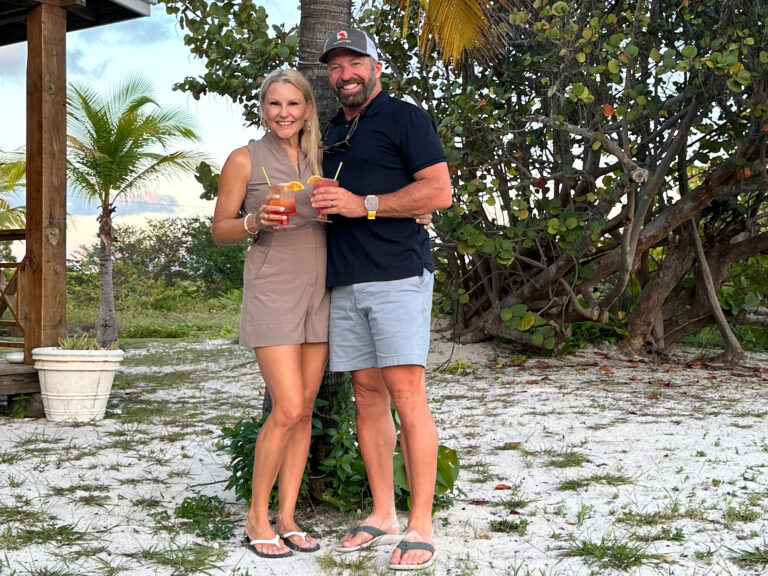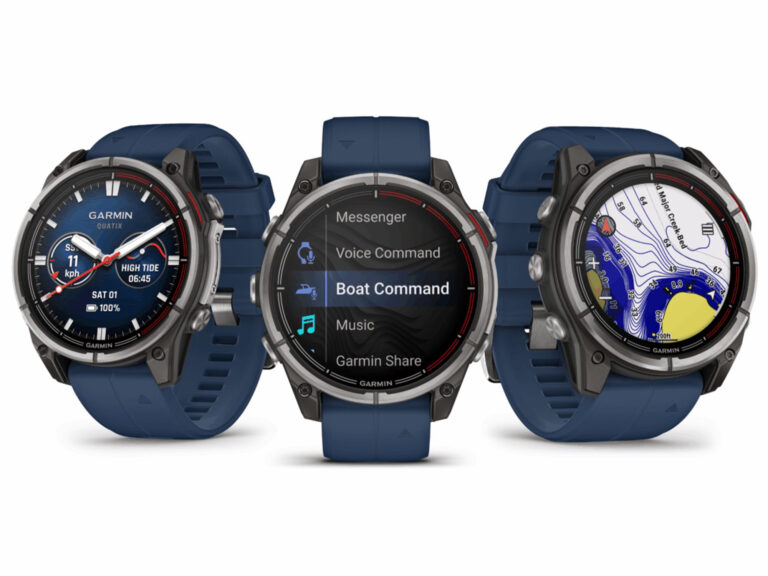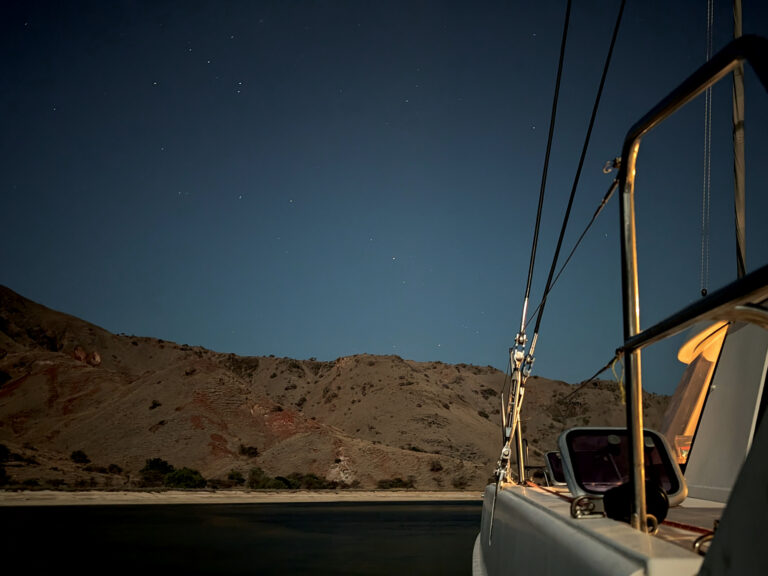
trash talk 368
A little while ago, I did something I’ve never willingly done before: I littered. I tossed several glass bottles into the ocean, after filling them with water to ensure their speedy trip to the bottom some 3,000 feet down. My kids were mortified, and to tell the truth, so was I. It reminded me of a passage from Curtis Ebbesmeyer and Eric Scigliano’s Flotsametrics and the Floating World: “The sea will remember this for the next century.” We have always, on Osprey and her predecessors, gone out of our way to pull trash from the water, deliberately changing course to retrieve insidious plastic bags and water bottles and those Mylar balloons that seem to have the half-life of plutonium. Throwing something in the water felt like betraying your mother.
Our alternative was to carry the bottles to some small island settlement and foist our problem onto the people who lived there. They’d most likely put them into a garbage pit or a burn pile, and there they’d soon be reduced to molten slag to be dumped someplace else. Taken within the context of the cruising life, sinking them was the most responsible thing we could do.
I didn’t come out here to throw bottles into an ocean I love, but trash is one of those facts of life that people tend not to think about when they’re glassy-eyed with cruising dreams. They’re imagining those perfectly white half-moon beaches, not the tons of plastic bottles and bags, flip-flops, polypropylene fishing nets, and what scientists call “confetti”-the trillions of tiny pieces of plastic that percolate through the water column, ride thousands of miles on the oceanic gyres, then wash up all over those perfect beaches. Trash-what we produce on the boat every day, and what we pick through as intriguing, amusing, and appalling flotsam when we walk the beach-is front and center in the cruising life.
Because we see so much of it, and maybe as a way of deflecting how sad it is to witness this dubious human contribution to our world, cruisers have a lot of fun with trash and often come up with clever ways to recycle and reuse. Construction helmets (for some reason, every beach seems to have at least one) become birdbaths. Fishing floats become trail markers. If you’re patient, the beach can be the world’s biggest parts department. We needed about a dozen plastic doughnuts to rig a rolling anti-chafe strop so we could safely hang our hammocks from the roller-furled No. 2 jib while at anchor; we found more than enough in a pile of fishing net snagged among the junk on the shore.
Still, we have to deal with our own trash. Before we moved onto Osprey, we recycled so energetically that we rarely had a full can of garbage to drag to the curb once a week. Now we’re pleased if we have one bag at the end of 10 days. There are precious few recycling programs in developing countries, and no curbside pickup. We’re entirely responsible for what we produce, and unless we want to become a rolling garbage scow, we have to produce as little as possible. We’re better at this now, making simple changes like using washable kitchen chamois rather than paper towels, employing reusable Nalgene water bottles rather than buying bottled water, and trading fresh milk for dried (a gallon-sized plastic jug versus one crumpled foil envelope).
When there’s no place to safely dispose of what’s left, we start a beach fire with our cardboard and paper and burn the rest. Which brings us to the bottles, inert, yes, but trash nonetheless. When sunk to great depths, the bottles do the least damage. But still I know that long after they’ve passed from our fleeting attention, the sea will carry our burden.
The Clarkes plan to spend the hurricane season in Guatemala.


